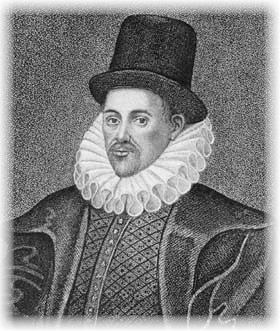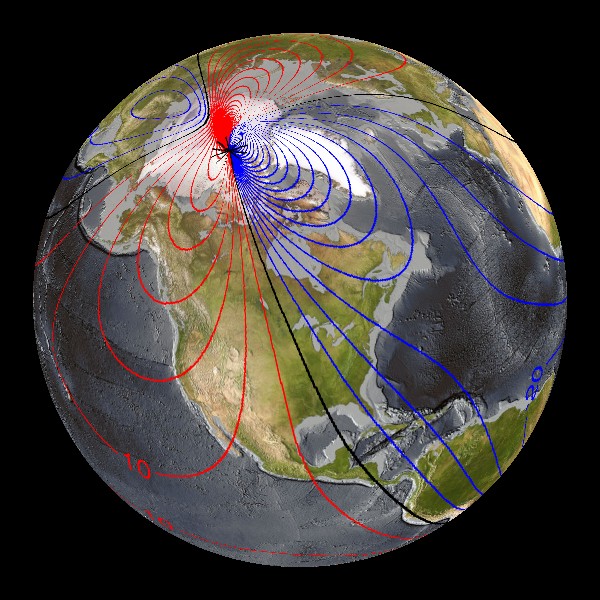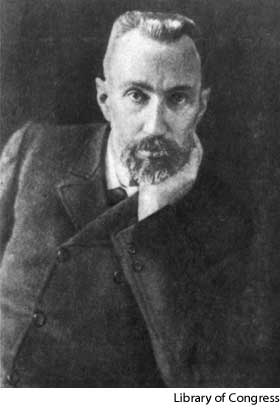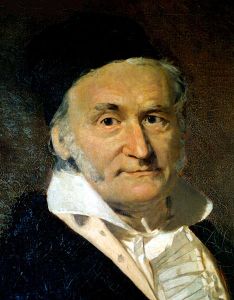Why the Earth has a magnetic field
 In his De Magnete, published 1600, William Gerbert (1540-1603) stated that “the earth is a great magnet”. Gilbert came to this conclusion after assembling many worldwide measurements of declination made by European explorers. (Backus, Parker, Constable; p.3)
In his De Magnete, published 1600, William Gerbert (1540-1603) stated that “the earth is a great magnet”. Gilbert came to this conclusion after assembling many worldwide measurements of declination made by European explorers. (Backus, Parker, Constable; p.3)
Declination is the difference between the orientation of the Earth’s magnetic field and true North.

 Pierre Curie (1859-1906) discovered that materials will lose their magnetic properties above a specific temperature called the Curie Temperature. (Meissner; p.48) The Curie Temperature for Iron is 768°C (http://en.wikipedia.org/wiki/Curie_temp) and the predicted temperature of the Earth’s liquid outer core is between 3500°C and 4000°C (Luhr; p.55).
Pierre Curie (1859-1906) discovered that materials will lose their magnetic properties above a specific temperature called the Curie Temperature. (Meissner; p.48) The Curie Temperature for Iron is 768°C (http://en.wikipedia.org/wiki/Curie_temp) and the predicted temperature of the Earth’s liquid outer core is between 3500°C and 4000°C (Luhr; p.55).
 Carl Friedrich Gauss (1777-1855) developed new mathematical methods in the 1850’s and established the basic theory of Earth’s magnetic field and discovered that nearly the whole magnetic field is generated in the Earth’s interior. (Meissner; p.48) Gauss also measured the field and determined it has strength between 0.6 gauss at the poles and 0.3 gauss at the equator (Backus, Parker, Constable; p.4). The unit gauss is a measure of magnetic flux. (1 gauss = 1x10^-4 Tesla)
Carl Friedrich Gauss (1777-1855) developed new mathematical methods in the 1850’s and established the basic theory of Earth’s magnetic field and discovered that nearly the whole magnetic field is generated in the Earth’s interior. (Meissner; p.48) Gauss also measured the field and determined it has strength between 0.6 gauss at the poles and 0.3 gauss at the equator (Backus, Parker, Constable; p.4). The unit gauss is a measure of magnetic flux. (1 gauss = 1x10^-4 Tesla)
So thanks to Gauss we know that the Earth’s magnetic field emanates from within the planet but due to Curie’s determinations, the iron core of the Earth could not hold magnetic properties therefore some other mechanism produces the magnetic field.
Home - Page1 - Page2 - Page3 - Page4 - Page5 - Sources
 In his De Magnete, published 1600, William Gerbert (1540-1603) stated that “the earth is a great magnet”. Gilbert came to this conclusion after assembling many worldwide measurements of declination made by European explorers. (Backus, Parker, Constable; p.3)
In his De Magnete, published 1600, William Gerbert (1540-1603) stated that “the earth is a great magnet”. Gilbert came to this conclusion after assembling many worldwide measurements of declination made by European explorers. (Backus, Parker, Constable; p.3) 

